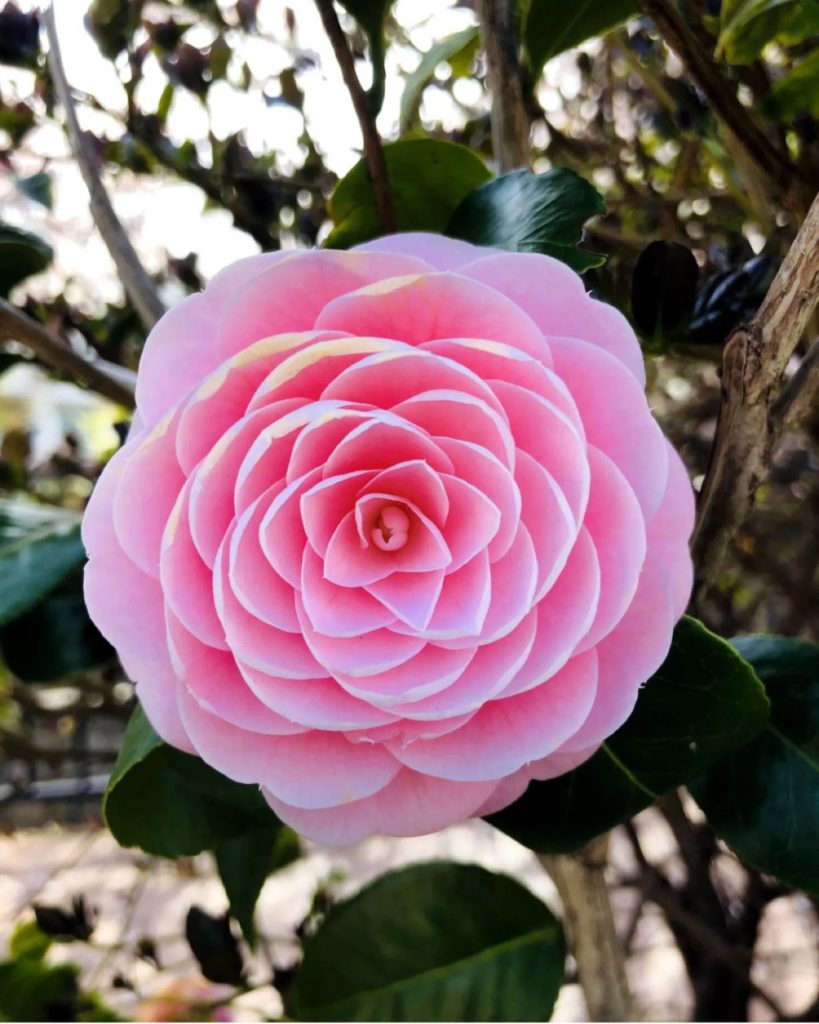
As a ratio representing beauty, there are the golden ratio and the silver ratio. The golden ratio is 1:1.618, while the silver ratio is 1:1.141. In the Western world, it has been known for a long time that the golden ratio is preferred, and it has been frequently used in buildings, sculptures, and paintings since ancient times, such as Leonardo da Vinci’s human figure, the Parthenon, the Arc de Triomphe, Venus de Milo, and the Mona Lisa. On the other hand, the silver ratio, also known as the “Yamato ratio,” has been considered the “divine ratio” among Japanese carpenters since ancient times. This ratio has been widely incorporated not only in the construction of buildings such as Horyuji Kon-do and Goju-no-to, and Ise Shrine but also in the streetscape, sculptures, and flower arrangement of Heian-kyo. The golden and silver ratios provide extremely interesting topics in mathematics, biology, and cultural anthropology. The Otome-tsubaki (Camellia japonica) in the photograph seems to embody the silver ratio.
美しさを表す比率として黄金比と白銀比があります。黄金比は1:1.618に対して白銀比は1:1.141という具合です。西洋では、古くからこの黄金比が好まれていることがわかっており、レオナルド・ダ・ヴィンチの人体図、パルテノン神殿や凱旋門、ミロのヴィーナス、モナ・リザなど、古代から建物や彫刻、絵画などに頻繁に使われてきました。一方、白銀比は「大和比」とも呼ばれ、日本では古くから大工の間で「神の比率」とされてきました。 日本最古の木造建築である法隆寺金堂や五重塔、伊勢神宮などの建築物のほか、平安京の街並み・彫刻・生け花にもこの比率が多く取り入れられてきました。この黄金比と白銀比は、数学的にも生物学的にも文化人類学的にも非常に興味深い話題が提供されています。写真のオトメツバキには白銀比が具現されている様に思えます。
